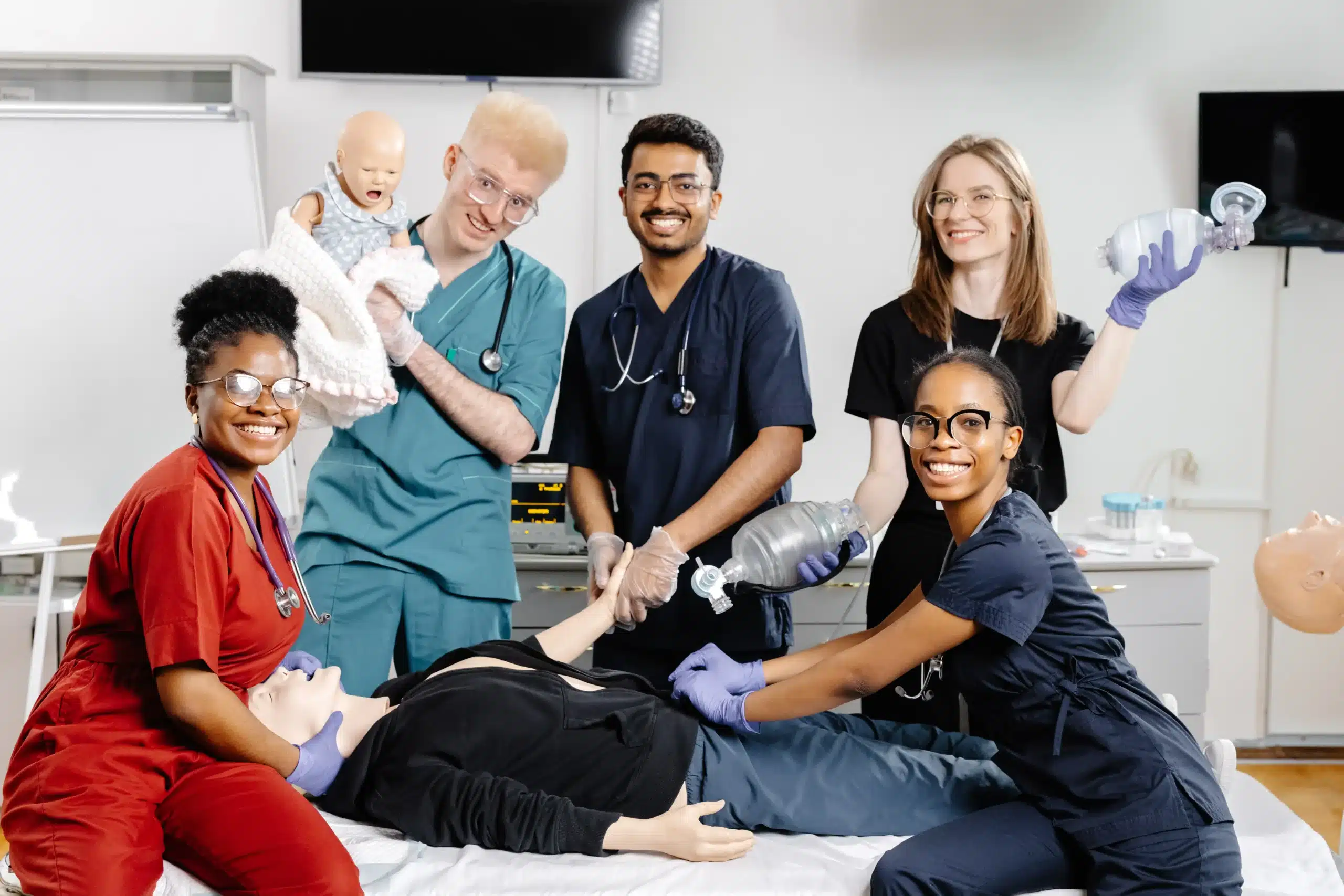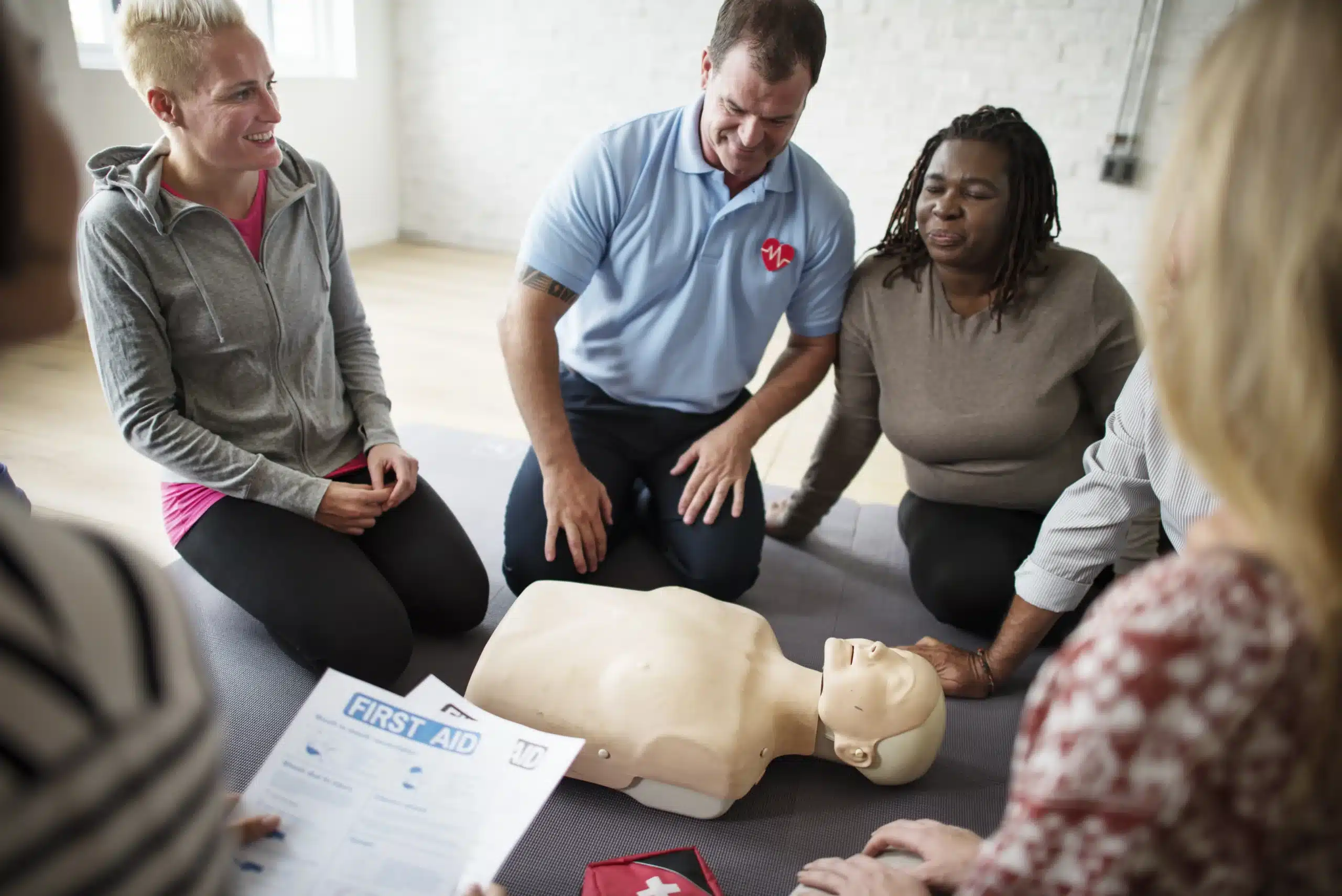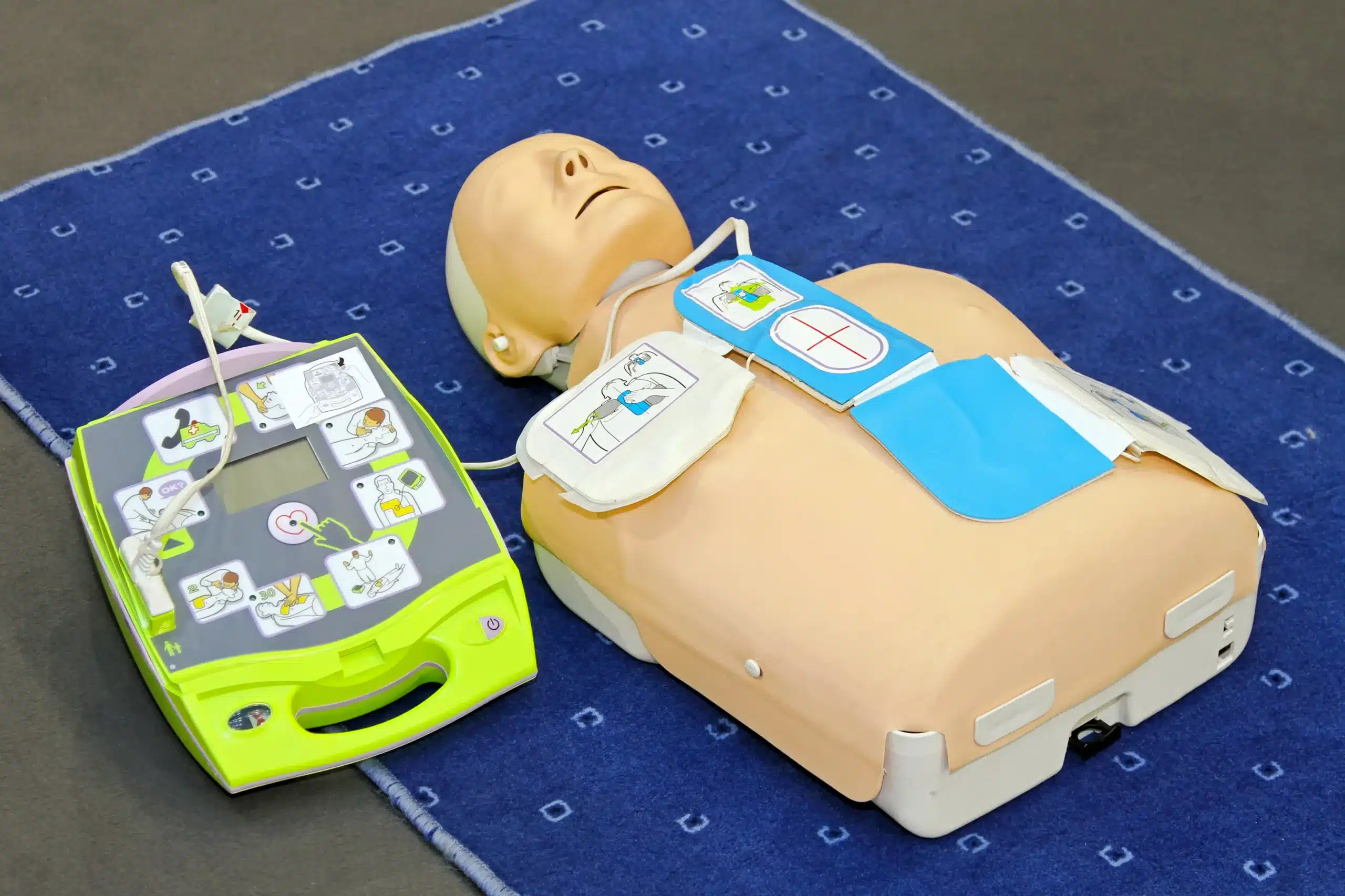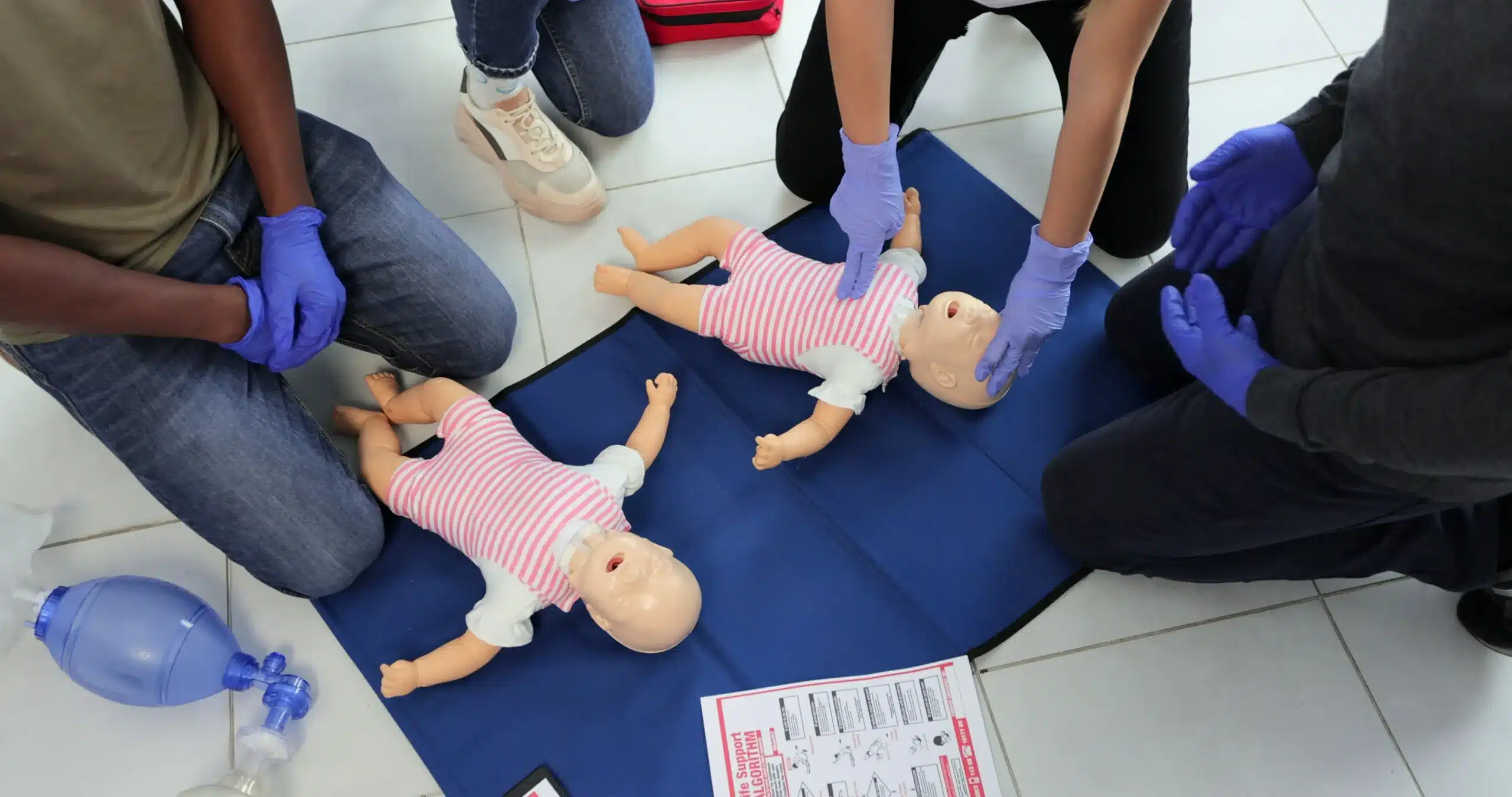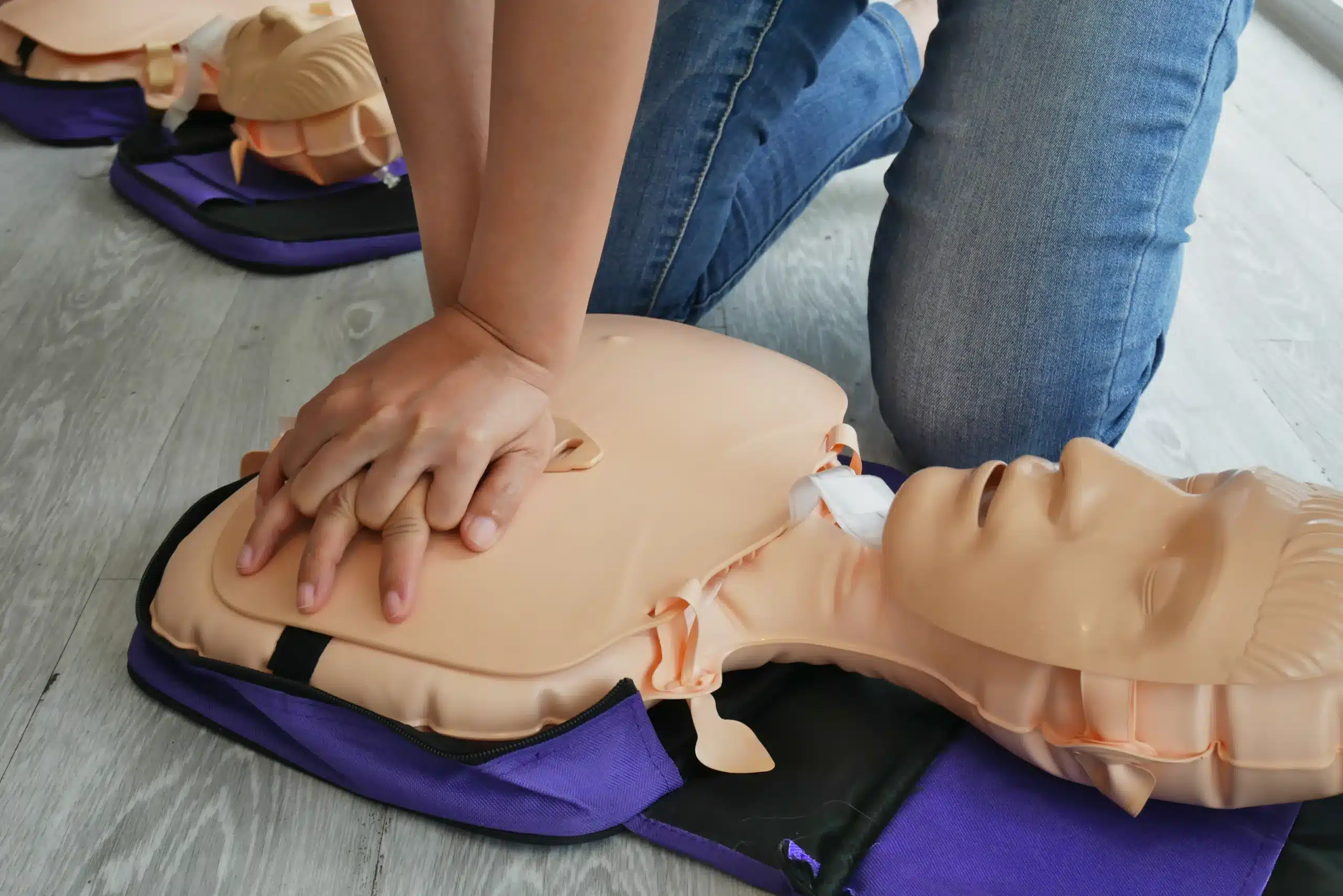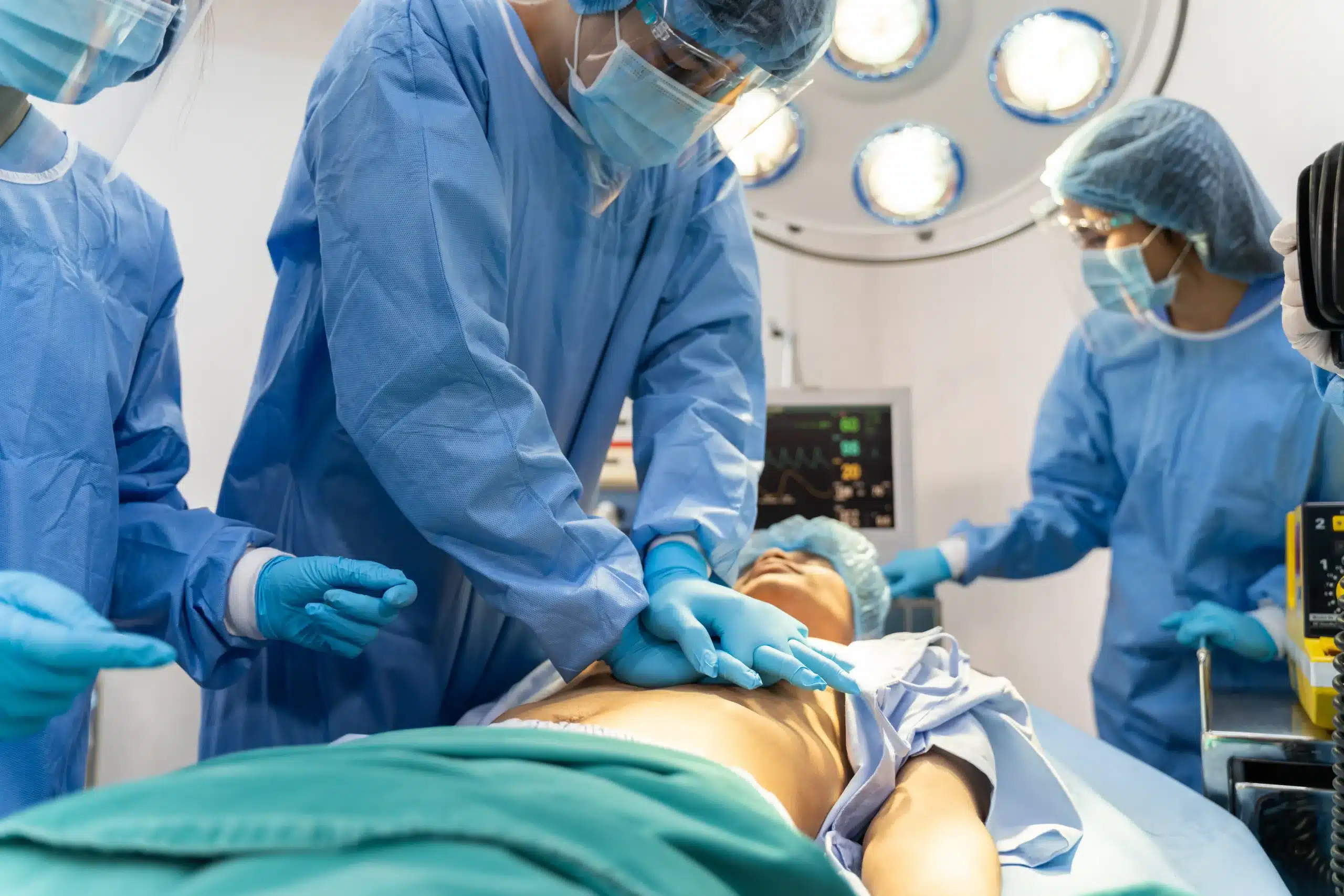CPR training is a powerful tool that equips you to respond effectively in medical emergencies. But with various courses and providers available, choosing the right path can be confusing. This guide simplifies the process, providing clear explanations of different CPR certifications, course formats, and cost considerations. We’ll explore everything from basic life support to specialized pediatric training, discuss the pros and cons of online vs. in-person learning, and guide you on how to find “CPR courses near me.” Whether you’re a healthcare professional, a childcare provider, or simply someone who wants to be prepared, this guide will help you find the perfect CPR training to match your goals and empower you to save lives.
Key Takeaways
- Find the Right CPR Course for You: Explore various CPR course options, from basic life support to specialized certifications like PALS, and choose one that aligns with your needs and career goals.
- Consider Cost and Time Commitment: CPR courses vary in price and duration. Research different providers and compare costs to find a course that fits your budget and schedule. Safety Training Seminars offers a low price guarantee.
- Check CPR Certification Requirements: While online CPR certifications offer flexibility, some employers prefer in-person training. Always verify the specific requirements of your workplace or governing body before enrolling in a course.
What CPR Courses Are Available?
CPR courses cater to different skill levels and needs, from basic life support to specialized certifications. Understanding these options helps you choose the right course.
Basic CPR vs. Advanced Life Support
Basic Life Support (BLS) teaches single-rescuer CPR, AED use, and relief of choking. It’s designed for healthcare providers and anyone needing a basic understanding of CPR. Advanced Cardiovascular Life Support (ACLS) covers more complex scenarios, focusing on team dynamics during resuscitation, airway management, and pharmacology in emergencies. It’s essential for healthcare professionals like doctors, nurses, and paramedics. Effective CPR training often includes realistic emergency scenarios to build confidence and preparedness. At Safety Training Seminars, our BLS and ACLS courses equip you with these essential skills.
Specialized CPR (Pediatric, First Aid, etc.)
Beyond general CPR, specialized courses address specific situations. Pediatric Advanced Life Support (PALS) focuses on the unique needs of infants and children. For example, the American Heart Association PALS Course provides comprehensive training in pediatric emergencies. First Aid courses teach how to manage injuries like cuts, burns, and fractures. These specialized certifications are valuable for childcare providers, teachers, coaches, and anyone working with children. Organizations like the Red Cross offer tailored CPR training for various groups, including schools.
Online, In-Person, and Blended Learning
CPR courses are offered in various formats to fit your schedule and learning style. In-person classes provide hands-on practice and direct interaction with instructors. Online CPR certifications offer flexibility and convenience, allowing you to learn at your own pace. Blended learning combines online coursework with in-person skills sessions, offering a balance of theory and practical application. The Red Cross, for instance, offers blended learning through their “Simulation Learning” format. Consider your learning preferences and the requirements of your profession when choosing a format.
How Much Do CPR Courses Cost?
CPR certification is an investment in a life-saving skill, so understanding the costs involved is important. Let’s break down typical expenses, time commitments, and how long your certification remains valid.
Course Costs & Time Commitment
CPR course fees vary based on the level of training and the provider. Basic CPR courses for individuals typically range from $20 to $55. Pediatric CPR training often falls between $25 and $40. Combined CPR and First Aid certification usually costs around $40 to $60. For healthcare providers needing Basic Life Support (BLS) certification, the cost is generally between $60 and $80. Online CPR courses are often the most budget-friendly, ranging from $12.95 to $14.95. Remember, these prices are averages, and it’s always best to check with your chosen provider, like Safety Training Seminars, for their specific pricing. Safety Training Seminars offers a low price guarantee to ensure you’re getting the best value. You can explore their BLS, ACLS, and PALS course options to learn more.
Time commitment also varies depending on the course type. Basic CPR courses can often be completed in a few hours, while more advanced courses like ACLS or PALS require a longer time investment.
Certification Validity and Renewal
Most CPR certifications are valid for two years. After this period, you’ll need to renew your certification. Renewal typically involves a shorter refresher course that covers essential skills and updates. This streamlined process allows you to maintain your qualifications without repeating the entire course. Check with your certifying organization, such as the American Heart Association, for specific renewal requirements.
Are Online CPR Certifications Accepted?
One of the most common questions about CPR certification is whether online certifications are valid. The short answer is: it depends. Online CPR certifications are accepted in many instances, especially if they’re from a reputable provider accredited by the American Heart Association (AHA) or the American Red Cross (ARC). However, some employers and organizations may prefer or require in-person training, including a hands-on skills assessment. Always check with your workplace or governing body to confirm their specific requirements before enrolling in any CPR course.
Online CPR: Pros & Cons
Online CPR courses offer undeniable advantages in terms of convenience and affordability. You can learn at your own pace, on your own schedule, often at a lower cost than traditional classes. This flexibility makes online learning a great option for busy professionals, parents, and anyone who needs to fit CPR training into a packed schedule. However, online courses typically don’t include the hands-on practice with mannequins that in-person training provides. While online courses cover the material effectively, some people learn best by doing, and that physical practice can build confidence for real-life emergencies. National CPR Foundation discusses more about online CPR.
Industry Standards & Employer Acceptance
When considering an online CPR course, look for providers accredited by recognized organizations like the AHA, ARC, or the National Safety Council (NSC). These accreditations signify that the course content meets established industry standards and is more likely to be accepted by employers. Choosing an accredited provider ensures you’ll receive high-quality training that aligns with current CPR guidelines. For more information on CPR training providers, visit CPR Select.
Online vs. In-Person Training
Research suggests that online and in-person CPR training are equally effective in terms of knowledge acquisition. Both methods teach the essential skills and information needed to perform CPR. The key difference lies in the practical application. In-person classes offer the chance to practice CPR techniques on mannequins under the guidance of an instructor. This hands-on experience can be invaluable for building muscle memory and preparing for the stress of a real emergency. CPR Certified offers a guide to choosing the right CPR certification program. Ultimately, the best choice depends on your learning style, schedule, and employer requirements. If you’re a kinesthetic learner who benefits from hands-on practice, in-person training might be the better fit. If you need flexibility and value self-paced learning, an online course could be ideal. You can learn more about learning CPR at Emergency First Response.
How to Choose a CPR Training Provider
Picking the right CPR training provider is key to getting a high-quality, recognized certification. Here’s what to consider:
Accreditation & Credentials
First, check if the provider is accredited by a respected organization like the American Heart Association (AHA) or the American Red Cross. This accreditation confirms their training meets industry standards and is widely accepted by employers and healthcare professionals. Safety Training Seminars, for example, offers a range of AHA-certified courses, including BLS, ACLS, and PALS, ensuring your training aligns with established guidelines. For those interested in the RQI program, more information can be found on the RQI program page.
Course Quality & Instructor Experience
Look for courses taught by certified instructors with significant experience. Effective CPR training often involves realistic scenarios and hands-on practice, which helps you learn and retain these crucial skills. Ask about the course format and the instructors’ backgrounds to ensure you’re getting practical, high-quality instruction. A good training provider, like Safety Training Seminars, will prioritize hands-on learning to build confidence and competence. They also offer a low price guarantee, ensuring you receive top-tier training at a competitive price.
Reviews & Ratings
Before you sign up, see what other students are saying. Check online reviews and ratings to gauge the provider’s reputation and the effectiveness of their programs. Positive feedback often indicates a reliable provider with valuable training. You can also ask for recommendations from friends, family, or colleagues who have completed CPR training. Word-of-mouth referrals can be a great way to find a trustworthy provider.
Find and Enroll in CPR Courses Near You
Now that you understand the importance of CPR certification, let’s explore how to find and enroll in a course that fits your needs.
Locate Nearby Courses
Start by searching online for “CPR classes near me.” This will often show results from organizations like the American Red Cross, which offer various class formats, including in-person, online, and blended learning. Local community centers, hospitals, and fire departments may also offer CPR training. If you’re in the San Francisco Bay Area, Safety Training Seminars offers a range of courses.
Course Selection Factors
Choosing the right CPR training provider is key to receiving quality instruction. Look for providers accredited by nationally recognized organizations like the American Heart Association (AHA) or the American Red Cross. Consider factors like instructor qualifications, course content, and available learning formats. This ensures the program suits your learning style and schedule. For more tips on selecting a provider, check out this article from Ready Response PA.
Enrollment & Preparation
Once you’ve chosen a provider and course, enrolling is usually straightforward. Most providers have online registration, allowing you to select a convenient date and time. Before class, familiarize yourself with the course materials and any pre-course work. Understanding what makes a CPR program effective, as discussed by StatCert LLC, will help you prepare and maximize your training.
Top CPR Training Providers
Several reputable organizations offer high-quality CPR training and certification. Here are a few leading providers:
Safety Training Seminars
Safety Training Seminars offers a range of AHA-certified courses, including BLS, ACLS, PALS, and First Aid. They prioritize excellent customer service and offer a low price guarantee. Explore their BLS, ACLS, and PALS course schedules. Learn more about their RQI program and their low price guarantee.
American Heart Association
The American Heart Association is a leading authority on CPR and emergency cardiovascular care. They offer various courses, from basic CPR to advanced life support, and their certifications are widely recognized.
American Red Cross
The American Red Cross is another respected provider of CPR training. They offer various courses and certifications, often with flexible scheduling. They also have resources for CPR training in specific locations, like Long Island, NY.
National Safety Council
The National Safety Council is a non-profit focused on health and safety. They offer various safety training courses, including CPR and first aid, with certifications recognized by many employers.
ProTrainings
ProTrainings offers various online CPR and first aid certifications. While online certifications offer convenience, ensure they meet industry standards and are accepted by your employer. CPR For Employment discusses online CPR certification validity.
Related Articles
- CPR Classes in San Francisco: A Complete Guide – San Francisco CPR Classes
- Advanced Cardiac Life Support (ACLS) in SF: Get Certified – San Francisco CPR Classes
- CPR Certification in San Francisco: Your Guide – San Francisco CPR Classes
- Online CPR Classes in SF: Your Certification Guide – San Francisco CPR Classes
- Low-Cost CPR Training in Northern California: A Guide – San Francisco CPR Classes
Frequently Asked Questions
What’s the difference between BLS and ACLS? BLS (Basic Life Support) teaches single-rescuer CPR, AED use, and how to help someone who is choking. It’s great for anyone who wants basic CPR knowledge, including healthcare providers. ACLS (Advanced Cardiovascular Life Support) is for healthcare professionals like doctors, nurses, and paramedics. It covers more complex situations, teamwork during resuscitation, airway management, and medications used in emergencies.
How long is a CPR certification valid, and how do I renew it? CPR certifications are typically valid for two years. To renew, you’ll take a shorter refresher course that covers the key skills and any updated guidelines. It’s simpler than taking the full course again. Check with your certifying organization (like the American Heart Association) for their specific renewal process.
Are online CPR certifications accepted? Online CPR certifications are accepted in many cases, especially if they come from a reputable organization accredited by the AHA or the American Red Cross. However, some employers or organizations might require in-person training with a hands-on skills test. Always check with your workplace or the relevant governing body to be sure.
How do I choose a CPR training provider? Look for providers accredited by a respected organization like the American Heart Association or the American Red Cross. This ensures their training meets industry standards. Check instructor experience, course content (including hands-on practice), and read reviews from past students. Also, consider the course format and schedule to find what works best for you.
How much do CPR courses typically cost? Costs vary depending on the course level and provider. Basic CPR classes can range from $20 to $55, while more advanced courses like BLS for healthcare providers usually cost between $60 and $80. Combined CPR and First Aid courses often fall in the $40 to $60 range. Online courses are often the most affordable option. Always check with the specific provider for their current pricing. Safety Training Seminars, for example, offers a low price guarantee.



